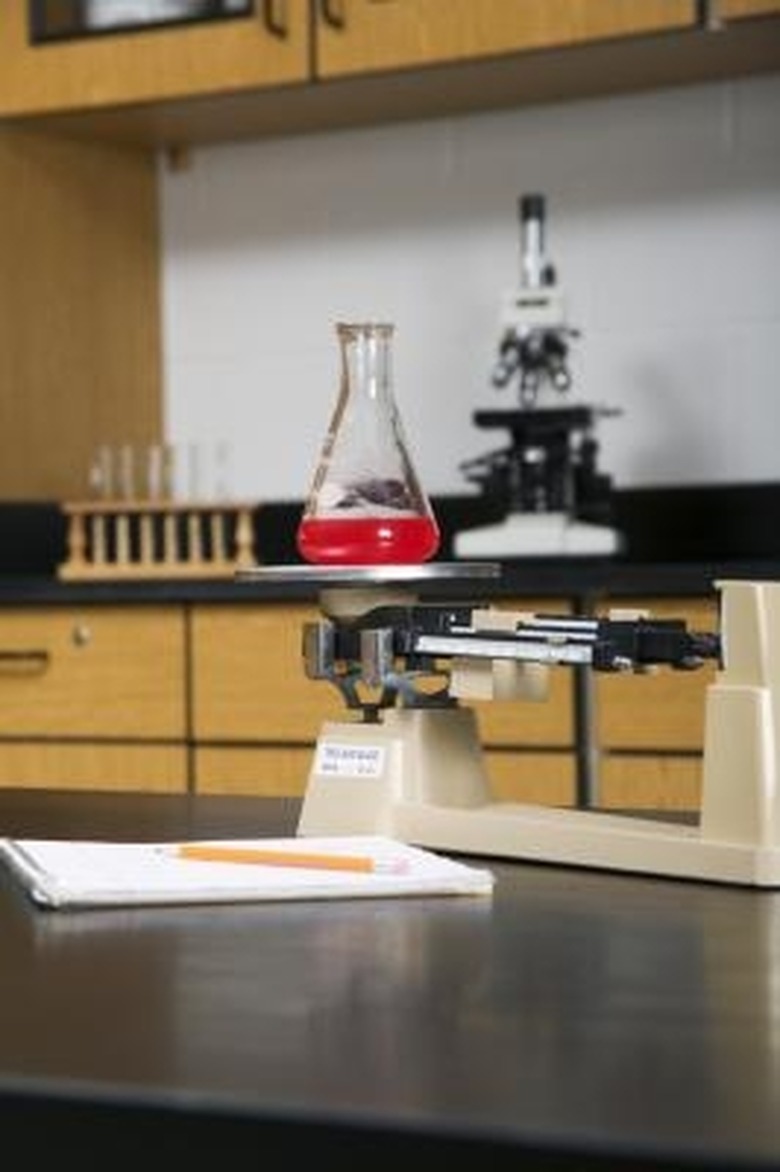How To Read A Triple Beam Balance Scale
A triple beam balance scale is relatively inexpensive and needs no electricity, but it can measure weight with a high degree of accuracy. For that reason, laboratory workers, doctors or anyone who requires a reliable, precise weighing device may use the scale.
To read a triple beam balance scale, you need to set and total three separate sliders that each indicate different weight units, such as 100 grams, 10 grams and single grams. Different scales may be designed to weigh only a few grams or several hundred grams.
Step 1
Check the scale's calibration by pushing all three sliders to the left as far as they'll go. The pointer on the right-hand side of the scale should be pointing exactly at the middle of the mark on the vertical post. If it's not, adjust the calibration of the scale by turning the calibration screw, which is usually found on the left side of the scale under the pan. Turn the screw in or out until the pointer lines up with the middle of its mark.
Step 2
Place the object that you want to weigh on the pan. The pointer will move all the way up. Push the middle slider slowly to the right until the pointer swings below its mark. Move the slider back to the previous notch. The pointer should rest above the mark.
Step 3
Push the rear slider to the right until the pointer again swings below its mark. Move the rear slider back to the previous notch. The point should again rest above the mark.
Step 4
Push the front slider slowly to the right until the slider begins to drop. Slowly nudge it to the right until it's positioned so the pointer points directly at the mark.
Step 5
Total the amounts shown by the three sliders. If the front slider is between two marks, estimate where it's pointing. For example, if the middle slider is in the 200-gram notch, the rear slider is in the 10-gram notch and the front slider is halfway between the 2-gram and 3-gram notches, you would total 200 grams plus 10 grams plus 2.5 to get 212.5 grams. The total of the three numbers is the weight of the object.
TL;DR (Too Long; Didn't Read)
The middle bar will usually be the one that's marked with the largest increments, but if a scale is arranged differently, always begin weighing by using the bar with the largest increments first, then the next smaller and finally the smallest.
Cite This Article
MLA
Thompson, David. "How To Read A Triple Beam Balance Scale" sciencing.com, https://www.sciencing.com/read-triple-beam-balance-scale-6376341/. 24 April 2017.
APA
Thompson, David. (2017, April 24). How To Read A Triple Beam Balance Scale. sciencing.com. Retrieved from https://www.sciencing.com/read-triple-beam-balance-scale-6376341/
Chicago
Thompson, David. How To Read A Triple Beam Balance Scale last modified March 24, 2022. https://www.sciencing.com/read-triple-beam-balance-scale-6376341/
